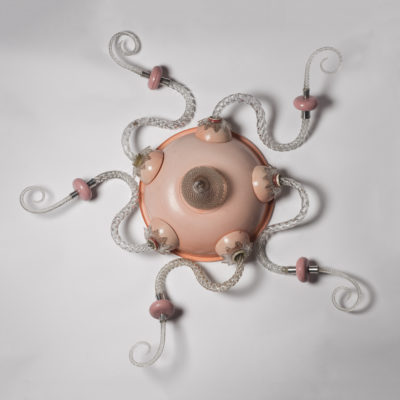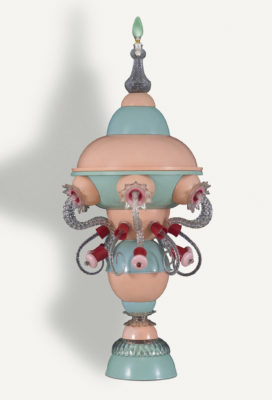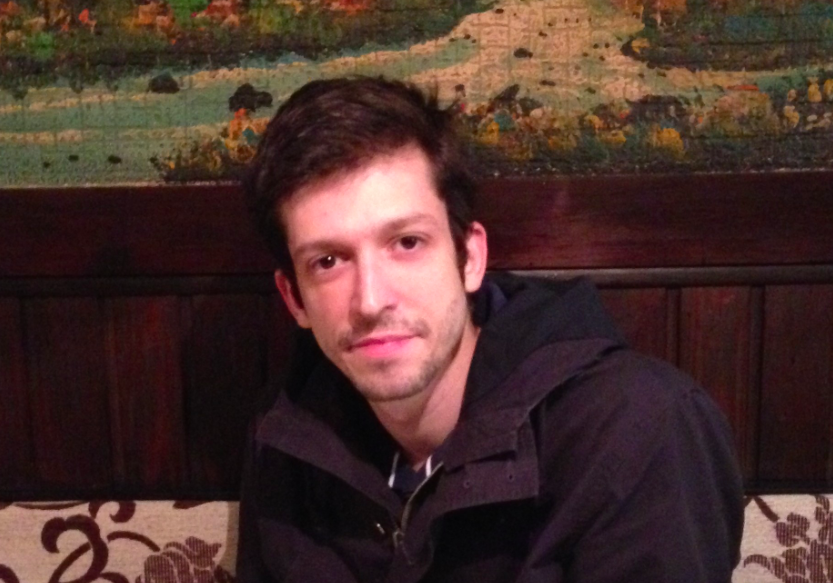Search
To search for an exact match, type the word or phrase you want in quotation marks.
A*DESK has been offering since 2002 contents about criticism and contemporary art. A*DESK has become consolidated thanks to all those who have believed in the project, all those who have followed us, debating, participating and collaborating. Many people have collaborated with A*DESK, and continue to do so. Their efforts, knowledge and belief in the project are what make it grow internationally. At A*DESK we have also generated work for over one hundred professionals in culture, from small collaborations with reviews and classes, to more prolonged and intense collaborations.
At A*DESK we believe in the need for free and universal access to culture and knowledge. We want to carry on being independent, remaining open to more ideas and opinions. If you believe in A*DESK, we need your backing to be able to continue. You can now participate in the project by supporting it. You can choose how much you want to contribute to the project.
You can decide how much you want to bring to the project.

Ahora voy a brillar is the title of the show on display at the Fortabat Art Collection that presents, for the first time, the entire oeuvre of Omar Schiliro (1962-1994), a somewhat overshadowed artist of those who were at the Centro Cultural Rojas in Buenos Aires in the nineties. The retrospective is well deserved: Schiliro only worked as an artist for three years, between 1991 and 1994, but during this period of time he condensed a whole career. Thirty-odd sculptures made from cheap imported objects such as bowls and flowerpots to which he attached found elements such as glass marbles, bead necklaces and parts of chandeliers replaced his ordinary worries. These are repetitive works in the good sense of the term: they describe a monotonous action, patient and affectionate, a bit like a happy marriage.

Sin título, 1993. Plastic, glass, light and iron. 66 cm x 43.5 cm Ø. Private collection
Schiliro was an artist characterised by a flushed splendour, brief yet dazzled. With no previous studies in artistic subjects, this young man born on the outskirts of Buenos Aires to a single mother suddenly began to play a very active part in the art scene forged around the Rojas cultural centre. This was the time when curator Jorge Gumier Maier shed light on a generation of strange artists whose works had only been seen in scarcely standardised non-professional spaces; nightclubs, underground graphics and gay activism brought some joy to the decade of the eighties, the unsettled times of the post-dictatorship in Argentina. Earlier on, when he was younger, Schiliro had been a craftsman who sold his works at fairs and in parks on sunny days. Once diagnosed with HIV in 1991 and up until his untimely death, he created a very compact oeuvre, centred on sculpture made of found material, chiefly plastic and glass.
Much has been said about the mannerisms of the art scene at the Centro Cultural Rojas and its defence of a poor, inept image of the artist as non-professional. Critics like Pierre Restany and Jorge López Anaya described the creative production of the Rojas cultural centre as ‘vulgar’ or ‘light’ art, and yet the artists were characterised by a unique frankness, by loyalty to their own precarious conditions of production, and an extreme formal originality that at the time was obscure for local institutions. Since the turn of the century, however, the latter have sought to strengthen the communicating vessels between contemporary Argentinean art and the country’s regional art scene, focusing on the tradition of political neo-conceptualism and its supposedly ‘serious’ themes.
On the other hand, Rojas valued a lively, unconventional and pansexual veiledness, which was considered too local and untranslatable. Schiliro’s objects are codes for sensitivity that include ceremonial elements and certain extraterrestrial features of unknown function. Surprisingly, their brief yet extensive production focuses on such few elements and on a consistent set of solutions: most of the works appear to be variations of a single invisible idea that remains intact throughout the repertoire, deposited in the mind of the viewer as a password.

Sin título, 1993 (partial reconstruction in 2018). Plastic and glass. 107 x 65 cm Ø. Private collection.
Its chief mechanism is the insertion between the glass crystals that act as tentacles and the plastic bases that provide each piece with a circular section. The objects have the pastel colours of the plastic pieces that shape them, to which he added lights and, in some cases, mobile parts that emphasise a playful, optical and kinetic element. The light of the works and their elusive formal pattern likens them to magic lanterns whose function is to look out for happiness. Reiteration, in Schiliro, is therapeutic, not because it offers a temporary solution but because it opens up a path for self-knowledge. This reiteration, present in Schiliro’s procedures as well as their results, gives the works an unsettling and yet comforting sense similar to that of the actions repeated in a rite.

Sin título, 1993. Plastic, glass and light. 78 x 60 cm Ø. Colección Eduardo F. Costantini
But taking art as a religion (‘re-sacralising art’, to quote Marcelo Pombo, another of the prominent artists at Rojas) goes hand in hand with not quite considering it a professional, normalised task, one that is immediately understandable. Schiliro’s life transition, marked by illness and the proximity of death, enabled him to do something that wouldn’t be so easy for an artist imbued with more worldly dilemmas: dispense with surrounding conditionings and insist on listening to his own inner machine. Perhaps he wasn’t seeking salvation but trying to specify the desire to build a temple in life, or at least decorate one.
Francisco Lemus, one of the few researchers who studied Schiliro’s oeuvre at a time when it was receiving practically no critical attention, recalls a few anecdotes in the exhibition catalogue, such as his contact with the local art scene, which conditioned his own development as an artist. It was love at first sight at the editorial office of Diferentes, a publication that emerged in the underground gay scene of Buenos Aires in 1985. According to Lemus, ‘This journal contained a dating section. One day Schiliro went to place an advertisement and was welcomed by Gumier Maier, who worked there as a journalist’. The two decided to meet again, and a few weeks later they began to go out together. Some time later, Schiliro moved into Gumier Maier’s house, where he developed his oeuvre. To quote Lemus again, ‘In the immediacy of death, he created an independent, almost sacred space for himself.’ And this space, the physical space of a house, the time he spent with his friends, his boyfriend and his loved ones enabled his reiterative artistic action, brief and brimming with love.
After the shows dedicated to Marcelo Pombo in 2015 and Benito Laren last year, Ahora voy a brillar is the third retrospective that the Fortabat Art Collection dedicates to the lives and oeuvre of the Rojas artists. It is not contradictory yet it is commendable to devote institutional efforts to these secret artists of the canon, so local and so entertaining, who took art seriously as a rite precisely because they didn’t take it seriously as a job.
In an interview published in La Maga review in 1993, Schiliro said, ‘I used to make costume jewellery and think of plastic art, but I’d never actually begun to work in the field. Later on, I contracted AIDS and was very depressed and Gumier invited me to take part in the show entitled Bienvenida primavera (Welcome Spring), for which I made a work I see as an expression of anxieties, depressions that were spring-like. I relate this to symptoms of mine — ulcers, spots on the skin; it all became the same thing. My intention was to express a state of hyper-happiness. The general intention is to transmit the best.’
*Cover: Omar Schiliro, Sin título, 1992 (Plastic and glass. 107 cm x 65 cm Ø. Private collection)

Claudio Iglesias is an art critic based in Buenos Aires. His latest books are Corazón y realidad (Consonni, Bilbao, 2018) and Genios pobres (Mansalva, Buenos Aires, 2018).
"A desk is a dangerous place from which to watch the world" (John Le Carré)